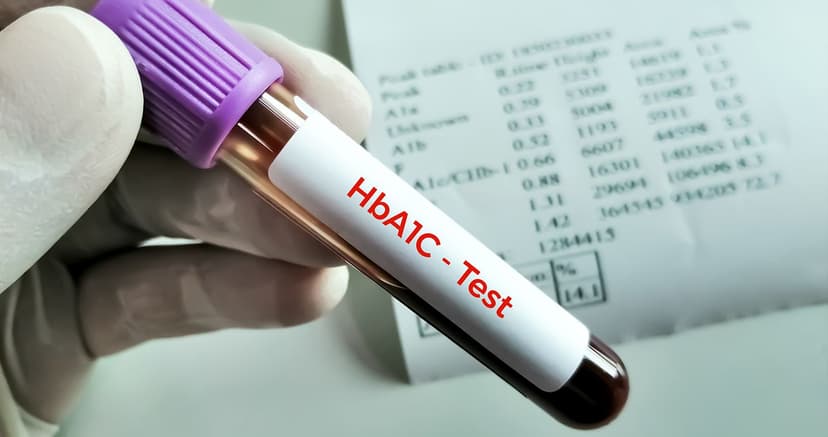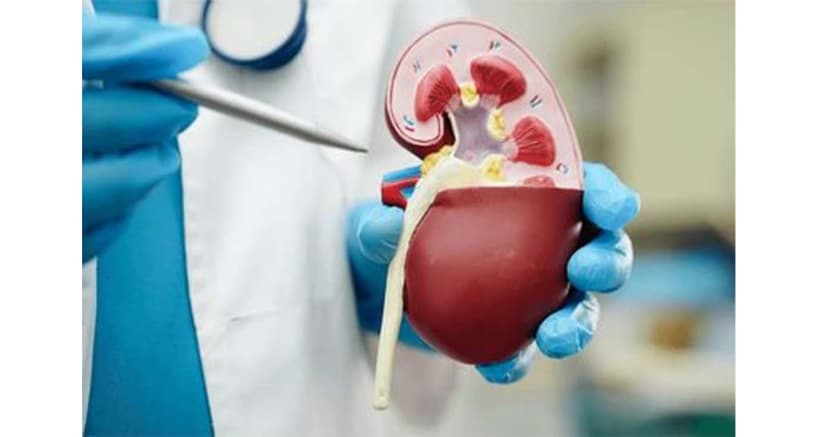How to Spot Diabetes Early: 7 Warning Signs You Shouldn’t Ignore
By:

Apex Hospitals
01-10-2024

India, often called the "Diabetes Capital of the World," accounts for 17% of the global diabetes population. Diabetes is a chronic condition where glucose (or sugar) levels rise. Ignoring or misinterpreting early symptoms can lead to more severe health issues down the line. Diabetes comes in two primary forms. In type 1 diabetes, the body attacks insulin-producing cells in the pancreas, preventing the body from using glucose for energy. Type 2 diabetes, which is more common, occurs when the body's insulin becomes less effective, leading to a buildup of glucose and similar symptoms in both types.
High blood sugar can develop gradually, often presenting subtle symptoms that may go unnoticed. Common signs like frequent urination and excessive thirst—typically associated with type 2 diabetes—are usually mild and can easily be mistaken for other causes. Many people are unaware they have high blood sugar until they are diagnosed with type 2 diabetes.
If left untreated, diabetes can result in complications such as heart disease, stroke, nerve and kidney damage, and vision loss. Even mildly elevated blood sugar can harm vital organs over time.
Recognizing the signs early is crucial. Here are seven symptoms you shouldn’t ignore, especially if you or someone you know is experiencing more than one. Catching diabetes early can help you manage the condition and prevent further health complications.
1. Frequent urination
Frequent urination is often one of the first signs of diabetes. When blood sugar levels are too high, the kidneys must work overtime to filter and remove the excess sugar. As they try to get rid of this extra sugar, they produce more urine, so you’ll need to use the bathroom more frequently, especially at night.
This increased urination is a direct result of your kidneys being unable to keep up with the excess sugar in your bloodstream. The extra sugar is expelled through your urine when they can't absorb it all. So, if you find yourself needing to go to the bathroom more than usual, it could be an early indication of high blood sugar or diabetes.
2. Excessive thirst
Excessive thirst often goes hand in hand with frequent urination. While feeling thirsty on a hot day or after not drinking enough water seems normal, persistent or extreme thirst might be a warning sign of diabetes. When your body struggles to process sugar properly, excess sugar ends in your bloodstream. To remove it, your kidneys produce more urine, leading to frequent urination. This results in dehydration, making you feel constantly thirsty.
Drinking more water to quench this thirst doesn’t help because the cycle continues: the more you drink, the more you urinate, and the thirst remains unquenched. Many overlook this symptom, assuming it's a natural response to drinking more fluids. However, suppose you feel constantly thirsty even after drinking water and frequent urination. In that case, it may indicate that your body isn’t producing enough insulin—a key early sign of diabetes.
3. Unexplained weight loss
Sudden and unexplained weight loss, especially when you’re not actively trying to lose weight, can be an early indicator that something may be off with your health—potentially an early sign of diabetes. When the body can’t get enough energy from the food you eat, it starts breaking down muscle and fat stores for fuel. This can cause noticeable weight loss even if your eating habits haven’t changed.
In cases of prediabetes or diabetes, this happens because the body cannot efficiently use glucose from food for energy. Insulin, the hormone responsible for helping cells absorb glucose, becomes less effective. As a result, despite increased hunger or food intake, the body can’t access the necessary energy from glucose and turns to fat and muscle reserves instead, leading to weight loss.
This process is compounded by the body’s attempts to eliminate excess sugar through urination, which further contributes to fluid and weight loss. Burning fat and muscle and increased urination can lead to significant, unintended weight loss.
4. Slow healing of wounds and cuts
High blood sugar levels in people with diabetes can interfere with the body’s natural ability to heal wounds, which can be especially dangerous if diabetes is undiagnosed. Elevated blood sugar can damage nerves and vessels, impairing blood circulation. This poor circulation means that vital nutrients and oxygen needed for proper healing are restricted from reaching wounds. As a result, even minor cuts and bruises may take weeks or even months to heal, increasing the risk of infections. When blood sugar levels remain high, it also weakens the immune system, further slowing the healing process and increasing the likelihood of bacterial infections.
If you notice that cuts or wounds are healing slowly, particularly if accompanied by other signs of prediabetes, it's crucial to consult a healthcare provider. Slow wound healing is a clear indication that your body may not be managing blood sugar effectively, which is an essential warning sign of prediabetes. Early detection and intervention through lifestyle changes and medical guidance can help manage prediabetes and prevent it from progressing to type 2 diabetes.
5. Dark skin patches
One of the lesser-known yet significant symptoms of prediabetes is the development of darkened patches of skin, particularly in body folds and creases. This condition, known as acanthosis nigricans, is often linked to insulin resistance, a critical factor in both prediabetes and type 2 diabetes.
Acanthosis nigricans appear as velvety, dark patches of skin, commonly found in areas like the neck, armpits, groin, elbows, and knees. These changes occur when high insulin levels in the bloodstream stimulate the rapid growth of skin cells. Excess insulin triggers growth factors in the skin, leading to the thickened, dark patches characteristic of this condition.
6. Poor or blurred Vision
Poor or blurred vision is a common symptom associated with prediabetes and can be an early sign of fluctuating blood sugar levels. When blood sugar levels are consistently high, they can temporarily alter the shape of the eye's lens, leading to vision problems. Excess glucose in the bloodstream causes the lens to swell, impacting its ability to focus correctly and resulting in blurred or distorted vision.
The root cause of this symptom lies in the body’s inability to efficiently use glucose, which leads to its accumulation in the blood. The excess sugar draws more fluid into the lens, changing its shape and size, which affects the eye’s focusing power. These vision changes can vary in intensity, corresponding to shifts in blood sugar levels.
7. Excessive hunger
Increased hunger, known as polyphagia, is a common symptom of prediabetes. It occurs due to the body's struggle to manage fluctuating blood sugar levels. In prediabetes, the cells become resistant to insulin, a hormone that regulates blood sugar. As a result, glucose from our food has difficulty entering the cells to be used for energy. This leaves the body in an energy-deficient state despite average food intake.
Because the cells aren't getting the necessary glucose, the body sends signals to the brain to eat more to meet its energy requirements. This can lead to persistent feelings of hunger, even after consuming a meal. The body craves food as it struggles to use glucose in the bloodstream effectively.
What should you do if you notice the signs mentioned above?
Since diabetes symptoms can often be subtle, you must visit your doctor regularly for checkups and screenings. If detected early, type 2 diabetes is highly manageable through lifestyle changes, including a balanced diet and regular exercise. These adjustments can significantly help control the condition and improve overall well-being.
You must consult your doctor immediately if you notice any signs or symptoms. Early detection and treatment are vital to enhancing your quality of life and minimizing the risk of serious complications. Our Department of Diabetes, Thyroid, And Endocrine Sciences can support you in adopting a healthier lifestyle, whether you’ve been diagnosed with diabetes or are noticing early warning signs.
Although diabetes can become a chronic condition, it can be effectively managed with proper care and lifestyle changes. That's why we have specialized diabetes management programs available to help in prevention and treatment, ensuring you receive personalized care tailored to your unique health needs.
Take control of your health today—schedule an appointment and embark on a long, healthy life!
FAQS
Related Articles
Connect With Us
Health In A Snap, Just One App.
KNOW MORE
























































































































































